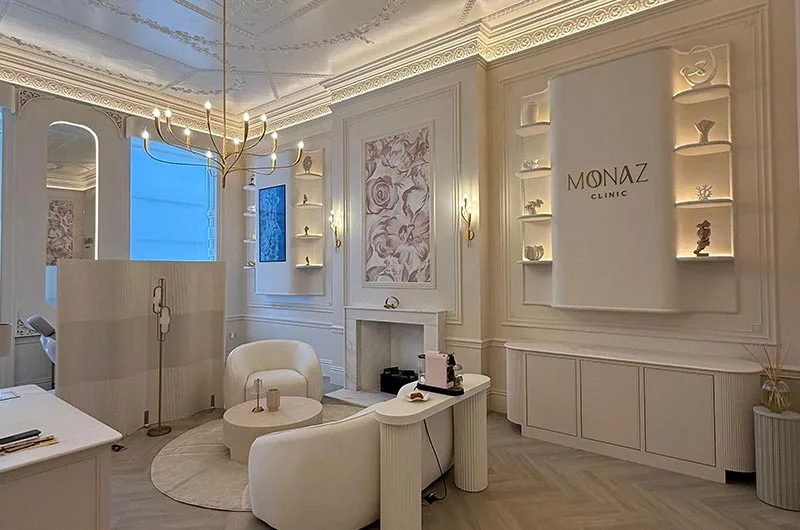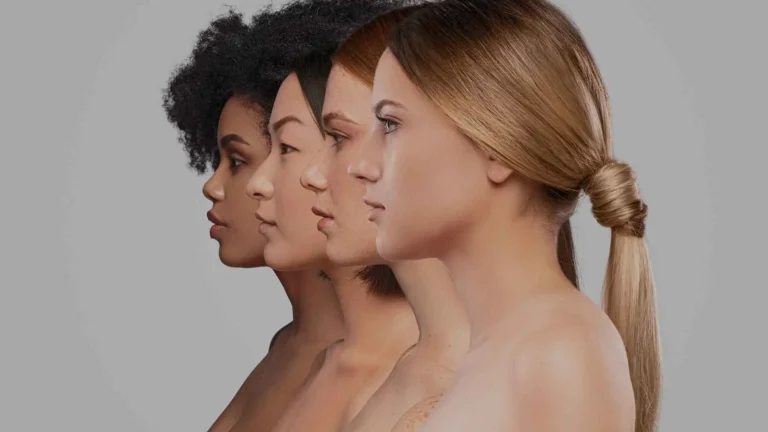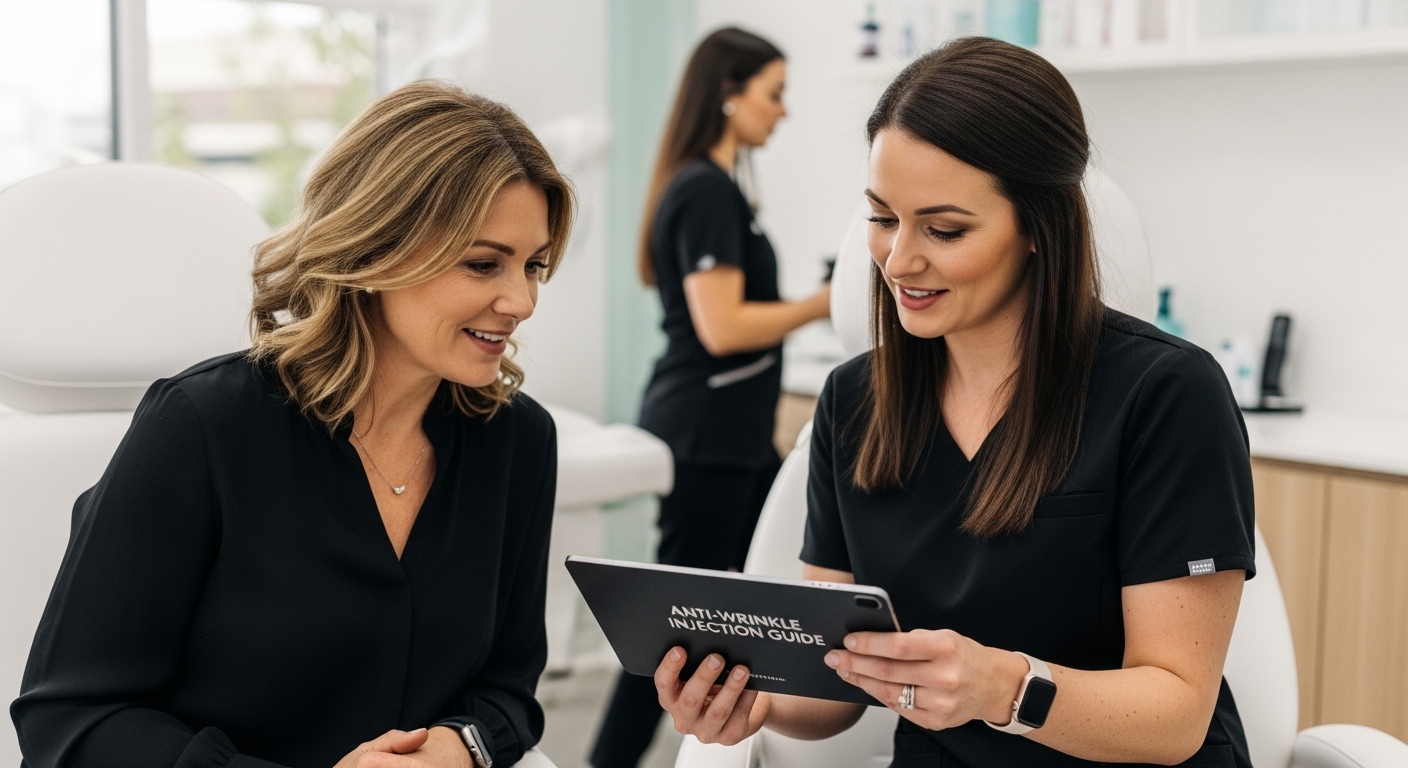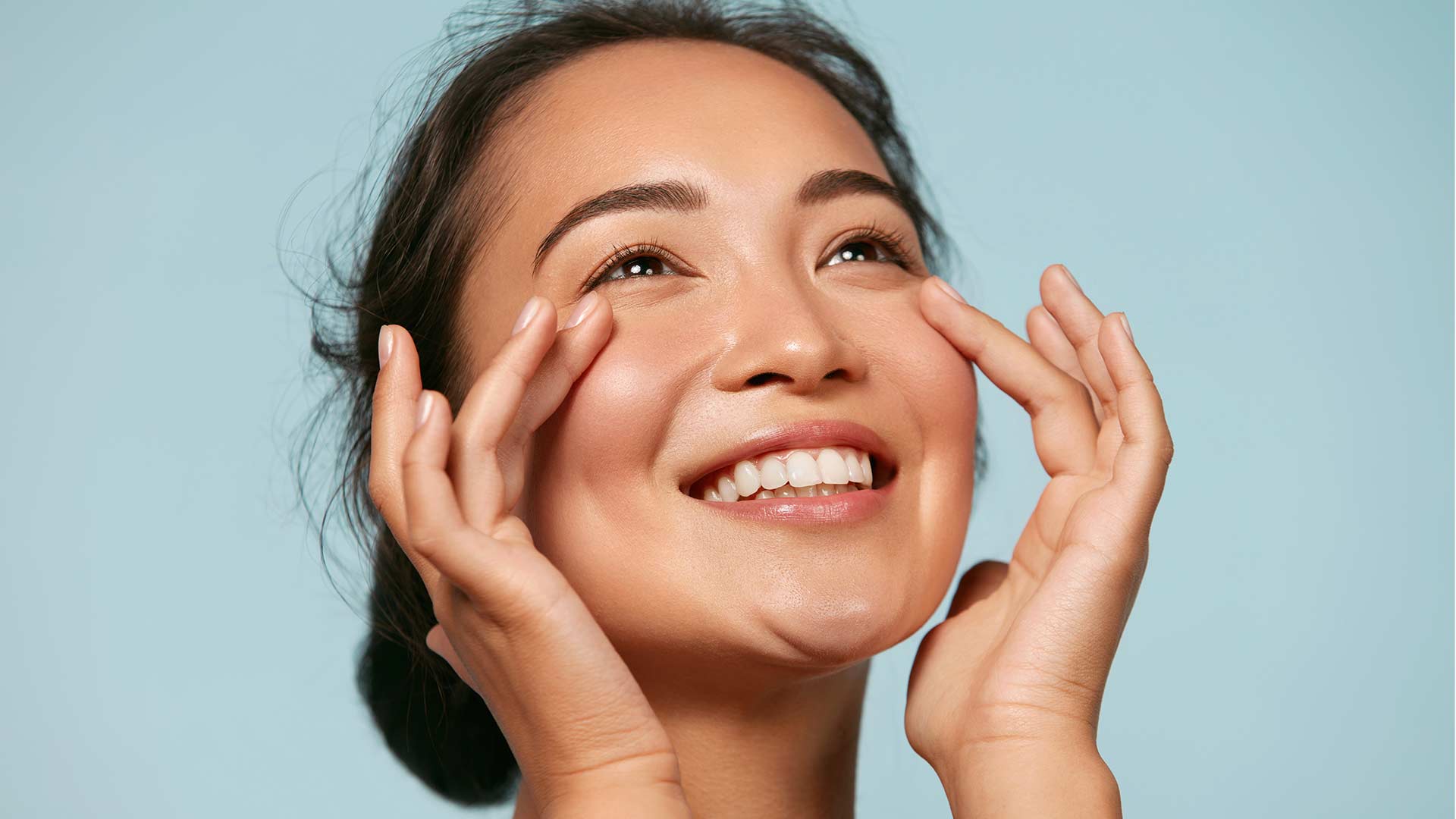Explore our anti-wrinkle injection guide for a complete understanding of its importance, workings, and key concepts in facial aesthetics.
Anti-wrinkle injections have rapidly become one of the most popular ways to smooth out fine lines and achieve a fresher look. More than 6 million botulinum toxin procedures are performed worldwide every year. You might think the main draw is simply fewer wrinkles. Yet the true impact goes deeper, shaping confidence and even how people perceive themselves in everyday life.
Table of Contents
- What Are Anti-Wrinkle Injections And How Do They Work?
- The Importance Of Anti-Wrinkle Injections In Aesthetics
- Key Concepts Behind Anti-Wrinkle Injections
- Potential Effects And Considerations Of Anti-Wrinkle Injections
- The Future Of Anti-Wrinkle Treatments In Aesthetic Practices
Quick Summary
| Takeaway | Explanation |
|---|---|
| Anti-wrinkle injections reduce facial wrinkles effectively. | These injections specifically target muscles to temporarily soften the appearance of lines and wrinkles. |
| Botulinum toxin interrupts nerve signals in muscles. | The injected toxin blocks signals at neuromuscular junctions, preventing specific muscle contractions responsible for wrinkles. |
| Treatment can enhance self-confidence and social interactions. | Aesthetic improvements may lead to better self-image and reduced anxiety related to appearance. |
| Preventative use can slow wrinkle formation. | Early interventions decrease muscle movement, which helps delay the development of deeper lines over time. |
| Personalised treatments improve aesthetic outcomes significantly. | Tailored strategies based on individual facial dynamics ensure naturally appearing results while focusing on unique goals. |
What Are Anti-Wrinkle Injections and How Do They Work?
Anti-wrinkle injections represent a sophisticated aesthetic treatment designed to temporarily reduce the appearance of facial wrinkles and fine lines. These precise cosmetic interventions target specific muscle groups responsible for creating dynamic facial expressions, effectively softening their impact on skin appearance.
The Science Behind Anti-Wrinkle Muscle Relaxation
At the core of anti-wrinkle injections is botulinum toxin type A, a purified protein that strategically interrupts nerve signals in targeted facial muscles. Research from the National Institutes of Health demonstrates how these injections temporarily paralyse specific muscle groups by blocking acetylcholine release at neuromuscular junctions.
The mechanism works through a carefully controlled process:
- Precise injection into specific muscle areas
- Temporary interruption of nerve signalling
- Reduction of muscle contraction capacity
- Smoothing of overlying skin surface
Treatment Areas and Aesthetic Applications
Anti-wrinkle injections are most commonly used in areas prone to repetitive muscular movement, which contribute to wrinkle formation. These typically include:
- Forehead horizontal lines
- Vertical lines between eyebrows (glabellar region)
- Crow’s feet around eye corners
- Fine lines surrounding the mouth
By targeting these specific zones, practitioners can create a more relaxed and youthful facial appearance.
The table below summarises common treatment areas and anticipated outcomes of anti-wrinkle injections to clarify the relationship between injection sites and their primary aesthetic effects.
| Treatment Area | Typical Result |
|---|---|
| Forehead horizontal lines | Smoother forehead, softer lines |
| Glabellar region (between brows) | Reduced frown lines |
| Crow’s feet (eye corners) | Diminished fine lines near eyes |
| Lines around the mouth | Softer mouth contours |
| Entire facial symmetry | Improved overall facial harmony |
The treatment’s precision lies in understanding individual facial muscle dynamics and applying targeted interventions that produce natural-looking results. Experienced practitioners carefully assess muscle movement patterns and aesthetic goals to deliver personalised outcomes that enhance natural facial expressions while minimising visible signs of ageing.
The Importance of Anti-Wrinkle Injections in Aesthetics
Anti-wrinkle injections have transformed contemporary aesthetic medicine, offering sophisticated solutions for individuals seeking natural and refined facial rejuvenation. Beyond mere cosmetic enhancement, these treatments represent a nuanced approach to managing visible signs of ageing with precision and artistic understanding.
Psychological and Emotional Dimensions
Beyond physical transformation, anti-wrinkle injections play a significant psychological role in personal confidence and emotional well-being. Research from the International Journal of Cosmetic Science indicates that aesthetic treatments can substantially improve self-perception and social confidence.
Key psychological benefits include:
- Enhanced self-image and personal perception
- Reduced appearance-related anxiety
- Improved social interactions and professional confidence
- Positive emotional regulation
Preventative and Long-Term Aesthetic Management
Anti-wrinkle injections are not merely corrective but also preventative treatments. By strategically reducing muscle movement in areas prone to wrinkle formation, these interventions can slow the progression of dynamic lines and prevent deep-set facial creases.
Preventative strategies encompass:
- Early intervention in areas of repetitive muscle movement
- Minimising future wrinkle development
- Supporting skin’s natural elasticity
- Maintaining a youthful facial structure
Discover more about our comprehensive approach to aesthetic preservation and how our tailored treatments can support your aesthetic journey.
Ultimately, anti-wrinkle injections represent a sophisticated intersection of medical science, artistic technique, and personal empowerment.
This table organises and compares the main preventative and corrective approaches associated with anti-wrinkle injections, illustrating their objectives and benefits in long-term facial aesthetic management.
| Approach | Main Objective | Primary Benefit |
|---|---|---|
| Preventative | Reduce future wrinkle progression | Maintains skin elasticity |
| Corrective | Soften existing dynamic facial lines | Immediate visible rejuvenation |
| Combined | Both delay and correct signs of ageing | Sustained youthful appearance |
Key Concepts Behind Anti-Wrinkle Injections
Anti-wrinkle injections represent a sophisticated medical aesthetic intervention that combines precise scientific principles with artistic understanding of facial anatomy. These treatments transcend simple cosmetic procedures, embodying a nuanced approach to managing facial muscle dynamics and skin ageing processes.
Neuromuscular Intervention Principles
Botulinum toxin functions through a highly targeted neuromuscular mechanism that temporarily interrupts specific muscle nerve signals. Research from the National Institutes of Health confirms that these interventions selectively block muscle contraction, typically producing effects lasting 3 to 6 months.
Key neuromuscular intervention principles include:
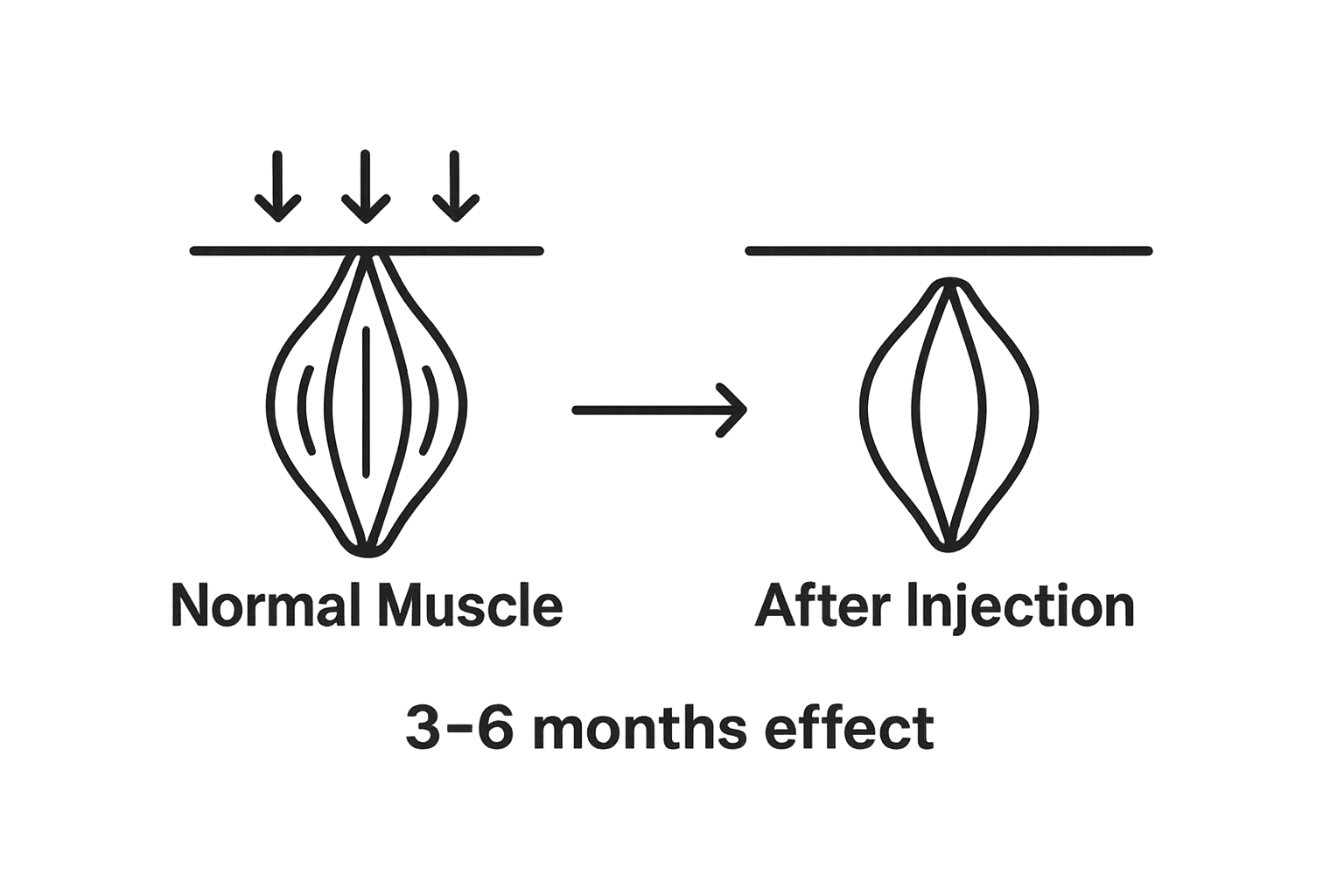
- Precise targeting of specific muscle groups
- Temporary nerve signal interruption
- Controlled reduction of muscular movement
- Minimally invasive treatment approach
Aesthetic Precision and Treatment Customisation
Successful anti-wrinkle injection treatments rely on intricate understanding of individual facial anatomy and movement patterns. Practitioners must assess unique facial characteristics, muscle dynamics, and aesthetic goals to deliver personalised outcomes.
Customisation considerations encompass:
- Individual muscle tension variations
- Facial symmetry assessment
- Skin texture and elasticity evaluation
- Personal aesthetic preferences
Learn more about our personalised anti-wrinkle injection techniques and how we tailor treatments to individual needs.
Ultimately, anti-wrinkle injections represent a sophisticated blend of medical expertise, scientific understanding, and artistic interpretation. By comprehensively addressing facial muscle mechanics, practitioners can deliver nuanced treatments that enhance natural beauty while maintaining individual facial expressions and characteristics.
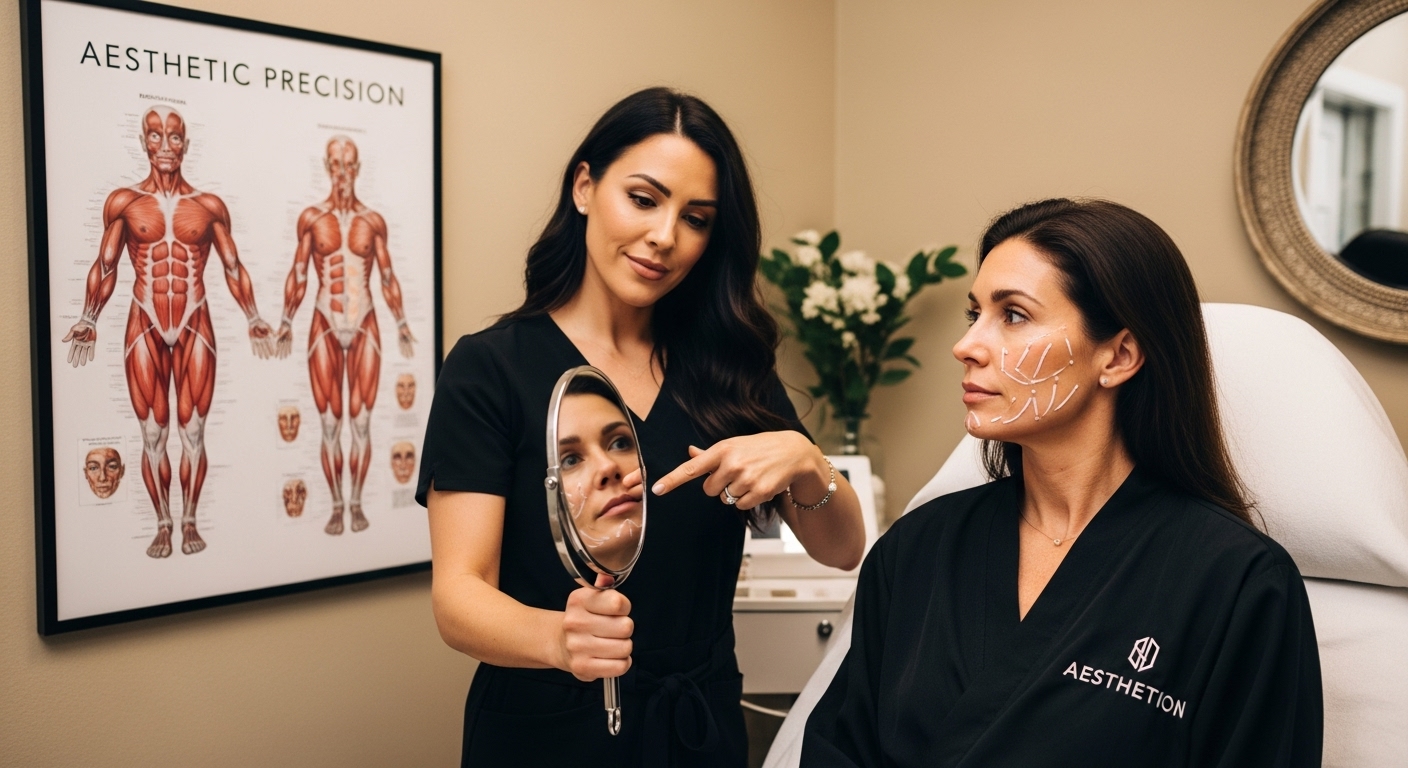
Potential Effects and Considerations of Anti-Wrinkle Injections
Anti-wrinkle injections represent a sophisticated aesthetic intervention with complex physiological interactions and nuanced potential outcomes. Understanding the comprehensive range of potential effects enables individuals to make informed decisions about pursuing these advanced treatments.
Clinical Outcomes and Aesthetic Transformations
The primary objective of anti-wrinkle injections extends beyond simple wrinkle reduction. Research from the Aesthetic Surgery Journal demonstrates that these treatments can produce multifaceted aesthetic improvements by strategically modulating facial muscle dynamics.
Anticipated clinical outcomes include:
- Softening of dynamic facial lines
- Subtle facial muscle relaxation
- Enhanced facial symmetry
- Refined facial contours
Potential Side Effects and Risk Management
While anti-wrinkle injections are generally considered safe, medical professionals emphasise the importance of understanding potential transient side effects and implementing comprehensive risk management strategies. Patients should be aware of possible temporary physiological responses.
Potential considerations encompass:
- Mild injection site bruising
- Temporary muscular weakness
- Potential asymmetrical muscle response
- Rare instances of allergic reactions
Explore our comprehensive approach to patient safety and treatment protocols and how we minimise potential treatment risks.
Ultimately, successful anti-wrinkle injection treatments require a collaborative approach between skilled practitioners and informed patients. By maintaining transparent communication, conducting thorough medical assessments, and setting realistic aesthetic expectations, individuals can achieve optimal outcomes while prioritising their overall health and well-being.
The following table summarises potential side effects of anti-wrinkle injections and recommended management considerations, helping readers make informed choices about safety concerns.
| Side Effect | Description | Risk Management |
|---|---|---|
| Mild bruising | Localised redness or discolouration | Apply cold compress |
| Temporary muscle weakness | Short-term reduced muscle activity | Monitor and reassure |
| Asymmetrical muscle response | Uneven appearance in some features | Follow-up adjustments |
| Allergic reaction (rare) | Itching or swelling | Immediate medical review |
The Future of Anti-Wrinkle Treatments in Aesthetic Practices
The landscape of aesthetic medicine continues to evolve, with anti-wrinkle treatments representing a dynamic frontier of technological innovation and personalized healthcare approaches. These emerging developments promise more sophisticated, precise, and patient-centric interventions that transcend traditional cosmetic enhancements.
Technological Advancements in Formulation
Precision engineering is revolutionising anti-wrinkle treatments through advanced molecular research and biotechnological innovations. Research from the National Institutes of Health highlights emerging trends focusing on novel formulations and longer-lasting botulinum toxin products.
Key technological developments include:
- Targeted molecular modifications
- Enhanced protein stability
- Extended treatment duration
- Reduced potential immune responses
Personalised Treatment Strategies
Future anti-wrinkle treatments are moving towards hyper-personalisation, integrating advanced diagnostic technologies and genetic profiling to create bespoke aesthetic interventions. Practitioners are increasingly adopting comprehensive assessment methodologies that consider individual physiological characteristics.
Personalisation strategies encompass:
- Genetic facial ageing analysis
- Advanced skin composition mapping
- Individual muscle movement assessment
- Customised treatment protocols
Discover our innovative approach to personalised aesthetic treatments and how we’re shaping the future of facial rejuvenation.
Ultimately, the future of anti-wrinkle treatments represents a harmonious intersection of medical science, technological innovation, and individual aesthetic aspirations. By continuously refining our understanding of facial dynamics and leveraging cutting-edge research, aesthetic practitioners are poised to deliver increasingly nuanced, effective, and personalised interventions.
Reveal a Naturally Youthful You with London’s Trusted Anti-Wrinkle Experts
Still searching for real answers to softening dynamic lines and achieving a confident, natural look? The challenges highlighted in our “Understanding the Anti-Wrinkle Injection Guide”—from deciphering muscle relaxation techniques to finding treatment that values your individuality—are all met with genuine expertise at Monaz Clinic.
Discover expert advice and practical solutions specific to anti-wrinkle care in our dedicated tips section. Personalised consultations led by medical specialists ensure every question about botulinum toxin, preventative strategies, and tailored results receives careful attention.
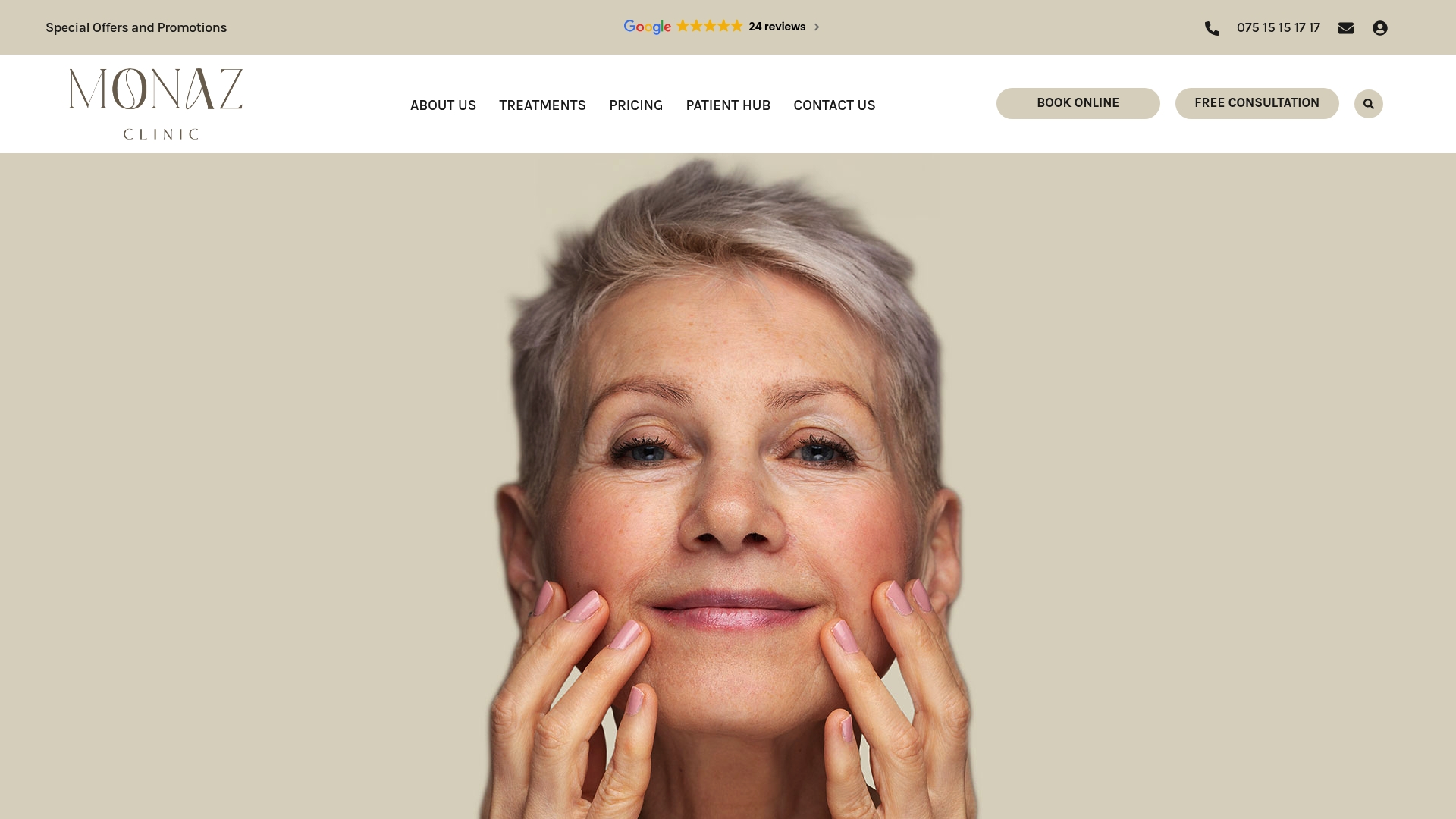
Book your complimentary consultation now at Monaz Clinic and unlock a bespoke treatment plan focussed on you. Choose a clinic where women’s safety and natural beauty come first, guided by experienced practitioners in the heart of Harley Street. Start your journey to refreshed, confident skin while appointments remain available.
Frequently Asked Questions
What are anti-wrinkle injections made of?
Anti-wrinkle injections primarily consist of botulinum toxin type A, a purified protein used to temporarily relax targeted facial muscles, reducing the appearance of wrinkles.
How long do the effects of anti-wrinkle injections last?
The effects of anti-wrinkle injections typically last between 3 to 6 months, depending on individual factors such as muscle dynamics and the area treated.
Are there any side effects associated with anti-wrinkle injections?
While generally safe, common side effects may include mild bruising at the injection site, temporary muscle weakness, and potential asymmetrical muscle response. Rare allergic reactions can occur.
Can anti-wrinkle injections be used as a preventative measure?
Yes, anti-wrinkle injections can serve as a preventative treatment by reducing muscle movement in areas prone to wrinkle formation, which may slow the progression of facial lines.
Recommended
- What is Anti Wrinkle Injections? Understanding Facial Aesthetics – Monaz Clinic London
- Understanding Anti-Wrinkle Injection Tips for Ladies – Monaz Clinic London
- Understanding the Advantages of Anti-Wrinkle Injections – Monaz Clinic London
- Understanding What is the Best Treatment for Wrinkles – Monaz Clinic London

